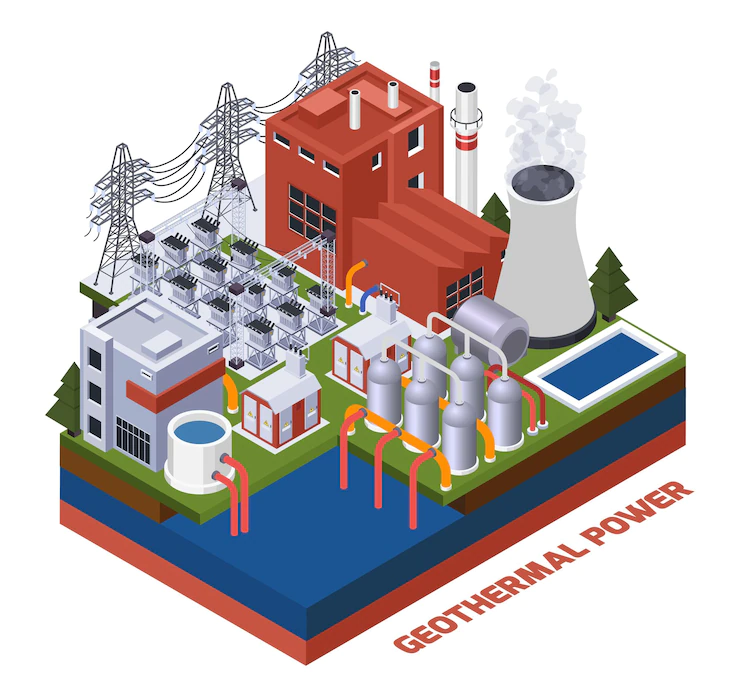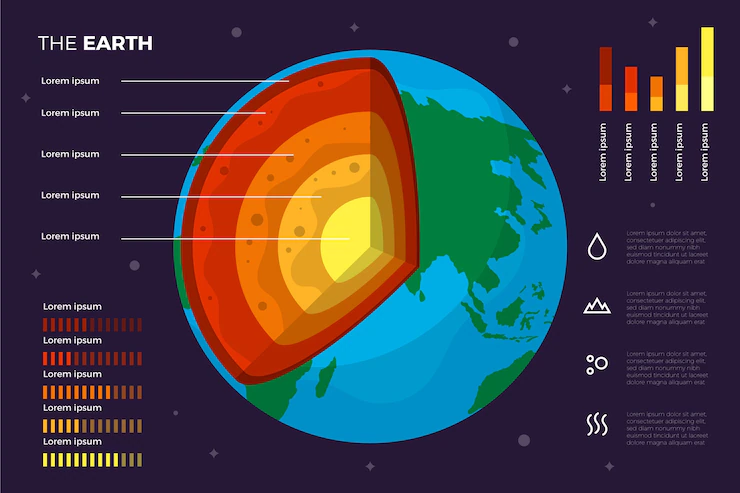geothermal energy


Geothermal energy is the thermal energy in the Earth's crust which originates from the formation of the planet and from radioactive decay of materials in currently uncertain but possibly roughly equal proportions. The high temperature and pressure in Earth's interior cause some rock to melt and solid mantle to behave plastically. This results in parts of the mantle convecting upward since it is lighter than the surrounding rock. Temperatures at the core–mantle boundary can reach over 4000 °C (7200 °F).
Geothermal heating, using water from hot springs, for example, has been used for bathing since Paleolithic times and for space heating since ancient Roman times. More recently geothermal power, the term used for generation of electricity from geothermal energy, has gained in importance. It is estimated that the earth's geothermal resources are theoretically more than adequate to supply humanity's energy needs, although only a very small fraction is currently being profitably exploited, often in areas near tectonic plate boundaries.
As a result of government assisted research and industry experience, the cost of generating geothermal power decreased by 25% over the 1980s and 1990s More recent technological advances have dramatically reduced costs and thereby expanded the range and size of viable resources. In 2021, the U.S. Department of Energy estimates that geothermal energy from a power plant "built today" costs about $0.05/kWh.
In 2019, 13,900 megawatts (MW) of geothermal power was available worldwide. An additional 28 gigawatts of direct geothermal heating capacity has been installed for district heating, space heating, spas, industrial processes, desalination and agricultural applications as of 2010. Forecasts for the future of geothermal power depend on assumptions about technology, energy prices, subsidies, plate boundary movement and interest rates. Pilot programs like EWEB's customer opt in Green Power Program show that customers would be willing to pay a little more for a renewable energy source like geothermal. About 100 thousand people are employed in the industry.
In 1892, America's first district heating system in Boise, Idaho was powered directly by geothermal energy, and was copied in Klamath Falls, Oregon in 1900. The first known building in the world to utilize geothermal energy as its primary heat source was the Hot Lake Hotel in Union County, Oregon, whose construction was completed in 1907. A deep geothermal well was used to heat greenhouses in Boise in 1926, and geysers were used to heat greenhouses in Iceland and Tuscany at about the same time.Charlie Lieb developed the first downhole heat exchanger in 1930 to heat his house. Steam and hot water from geysers began heating homes in Iceland starting in 1943.
in the 20th century, demand for electricity led to the consideration of geothermal power as a generating source. Prince Piero Ginori Conti tested the first geothermal power generator on 4 July 1904, at the same Larderello dry steam field where geothermal acid extraction began. It successfully lit four light bulbs. Later, in 1911, the world's first commercial geothermal power plant was built there. It was the world's only industrial producer of geothermal electricity until New Zealand built a plant in 1958. In 2012, it produced some 594 megawatts.

Outside of the seasonal variations, the geothermal gradient of temperatures through the crust is 25–30 °C (45–54 °F) per km of depth in most of the world. The conductive heat flux averages 0.1 MW/km2. These values are much higher near tectonic plate boundaries where the crust is thinner. They may be further augmented by fluid circulation, either through magma conduits, hot springs, hydrothermal circulation or a combination of these.
Estimates of the potential for electricity generation from geothermal energy vary sixfold, from 0.035to2TW depending on the scale of investments.Upper estimates of geothermal resources assume enhanced geothermal wells as deep as 10 kilometres (6 mi), whereas existing geothermal wells are rarely more than 3 kilometres (2 mi) deep.Wells of this depth are now common in the petroleum industry. The deepest research well in the world, the Kola superdeep borehole, is 12 kilometres (7 mi) deep.
Geothermal energy comes in either vapor-dominated or liquid-dominated forms. Larderello and The Geysers are vapor-dominated. Vapor-dominated sites offer temperatures from 240 to 300 °C that produce superheated steam.
Lower-temperature LDRs (120–200 °C) require pumping. They are common in extensional terrains, where heating takes place via deep circulation along faults, such as in the Western US and Turkey. Water passes through a heat exchanger in a Rankine cycle binary plant. The water vaporizes an organic working fluid that drives a turbine. These binary plants originated in the Soviet Union in the late 1960s and predominate in new US plants. Binary plants have no emissions.
Enhanced geothermal systems (EGS) actively inject water into wells to be heated and pumped back out. The water is injected under high pressure to expand existing rock fissures to enable the water to freely flow in and out. The technique was adapted from oil and gas extraction techniques. However, the geologic formations are deeper and no toxic chemicals are used, reducing the possibility of environmental damage. Drillers can employ directional drilling to expand the size of the reservoir.
Geothermal power requires no fuel (except for pumps), and is therefore immune to fuel cost fluctuations. However, capital costs are significant. Drilling accounts for over half the costs, and exploration of deep resources entails significant risks. A typical well doublet (extraction and injection wells) in Nevada can support 4.5 megawatts (MW) and costs about $10 million to drill, with a 20% failure rate